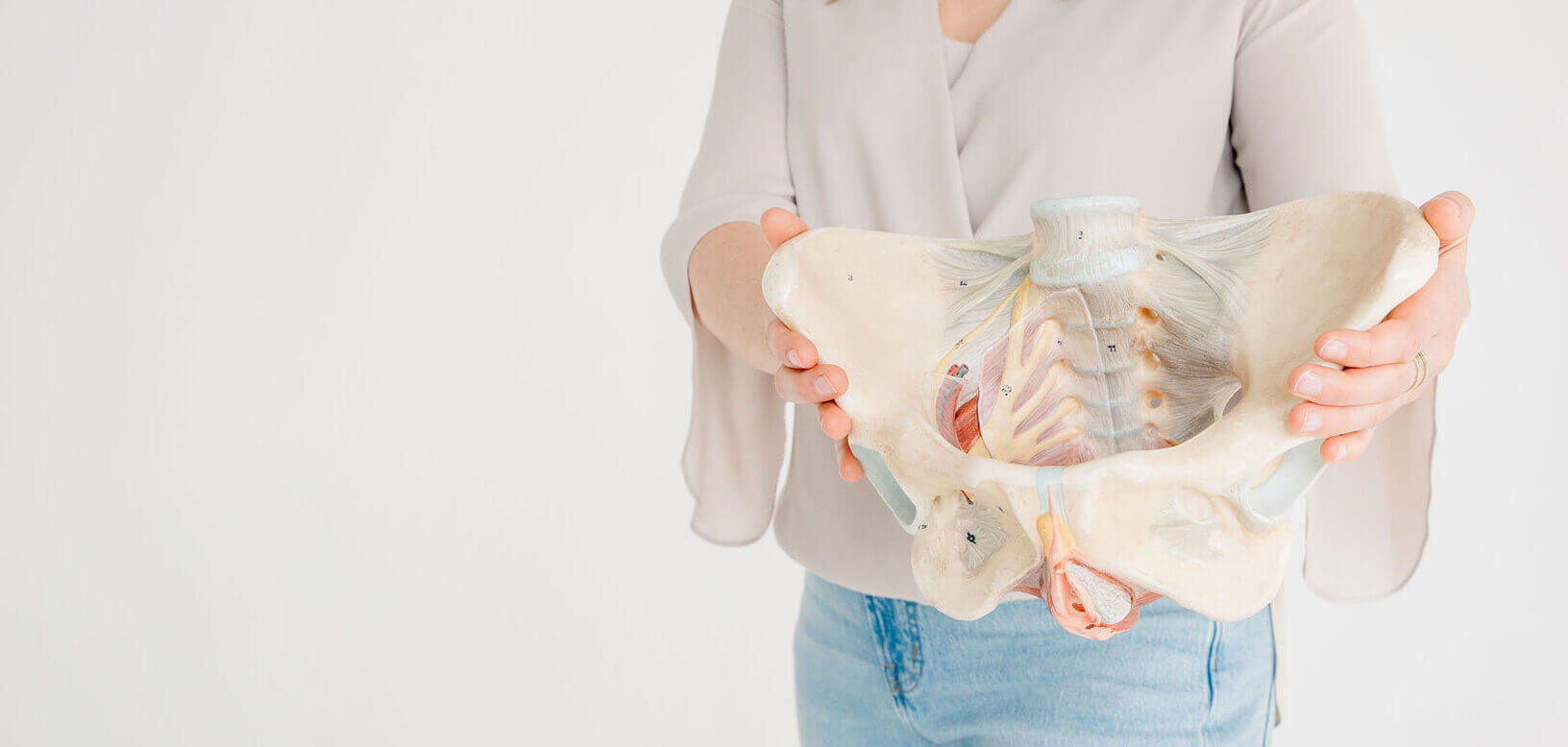
Diastasis Recti
Pelvic Floor Therapy for Diastasis Recti
About Diastasis Recti
Diastasis recti is a common condition that typically occurs during pregnancy. Simply put, it is a separation of the abdominal muscles that does not return to normal on its own. It affects over half the number of people who become pregnant, and often lasts even into the postpartum period or beyond. Although it is mostly commonly referred to in cases of pregnancy, it can also happen to non-pregnant individuals.
In cases of non-pregnant individuals, diastasis recti can be caused by poor exercise technique and certain medical conditions. Excess pressure or stress can cause separation of the abdominal muscles—therefore, professional athletes or bodybuilders are also prone to this condition.
As for diastasis recti during pregnancy, it is created by the stretching of the abdominal wall, especially during the second and third trimester. As the uterus expands and the abdominal muscles stretch, a separation of the rectus abdominis muscles occurs. These vertically aligned muscles, also known as the muscles that create “six-pack abs,” are divided down the middle with a section of tissue called the linea alba. This band of tissue widens and thins as the uterus expands and moves up and out of the pelvic bowl. It is highly elastic, and can return to normal after childbirth but oftentimes does not due to poor lifting and breathing mechanics.
The separation of the abdominal muscles is a normal process during pregnancy that allows more room for a growing baby. However, in some cases, the linea alba can become overstretched and will not return to its normal size even after birth—creating a gap between your ab muscles. This can make a person look as though they are still pregnant even a significant amount of time after childbirth.
Oftentimes, diastasis recti will resolve itself within several weeks postpartum. But for many, it remains for many months or even years. Many people claim that diastasis recti is just another normal part of pregnancy that people must deal with, but that is very untrue. Leaving this condition untreated, especially when it hasn’t healed, can result in more problems like pelvic floor dysfunction, which can include incontinence, constipation, pain with intercourse, and back and hip pain.
Diastasis recti itself does not necessarily create pain in the abdomen, but can create other symptoms such as:
- A bulge above or below the belly button
- Lower back pain
- Difficulty lifting or moving in certain ways
- Painful sex
- Urinary incontinence
- Constipation
- Pelvic pain
- Core weakness
- Poor posture
- Doming of the stomach during some movements

How Pelvic Floor Therapy Can Help
You may wonder, “What does diastasis recti have to do with the pelvic floor?”
The pelvic floor, among many other important functions, helps provide stability and core support to your body. It works together with the abdominal muscles to support the spine, pelvis, hips, and shoulders through all movements. The lower portion of your abdominals help work with the pelvic floor to support the lower back and pelvis, allowing for healthy pelvic floor functions. Additionally, the pelvic floor, abdominals, and diaphragm all work together to enable you to do something incredibly essential—breathe effectively!
As you can see, the pelvic floor and abdominal muscles are interrelated. When the abdominal muscles are not in good health, it can result in pelvic floor dysfunction, and vice versa—when pelvic floor dysfunction is present, the abdominals can’t properly do their job. These problems can create pain, constipation, difficulty with bowel movements and breathing, weakened core strength, and much more.
No need to worry, pelvic floor physical therapy can help treat and prevent diastasis recti!
For those planning to be pregnant, seeking out preventative pelvic floor therapy can not only help you prepare for pregnancy and childbirth, but will also allow you to address your core muscles and prepare them, too! Getting your pelvic floor, back, core, and abdominals in better condition before becoming pregnant is a great way to make postpartum symptoms (like diastasis recti) less likely or less severe.
Even if you are already pregnant, physical therapy can still be effective and safe! Dr. Meihofer has worked with patients in all parts of the pregnancy journey, and has the professional experience to lead pregnant patients through safe treatments and exercises. It’s never too late to get started!
That goes for postpartum patients as well. No matter if you are freshly postpartum or many years postpartum, it’s never too late to seek better health for your pelvic floor and core.
Preventing or treating diastasis recti involves learning how to safely strengthen your abdominal muscles, without worsening your condition. What does this mean? Well, many people hear “core strengthening” and decide they must do a lot of sit-ups or similar core-focused exercises, but this isn’t necessarily what is needed to properly strengthen the correct muscles.
Diastasis recti actually has a few variations in terms of where the split occurs, and therefore may have a space in different sections of the abdominal muscles (such as above or below the belly button).
Not only can a professional help identify what exercises are suitable for your specific needs, but they are also very knowledgeable about the deeper abdominal muscles that work in conjunction with the pelvic floor. Dr. Meihofer will be able to lead you through exercises that can actually target these deep muscles and the pelvic floor.
Just like how there are improper habits and postures that can create diastasis recti, this also goes for treatment. Trying any core exercise without knowing the purpose of the exercise or how to perform it properly may prove ineffective—or even worsen your condition. Similarly, leaving diastasis recti untreated increases your risk of injury, worsening of the condition, and continuation of the symptoms discussed previously.
The good news is that with pelvic floor therapy, diastasis recti can often be solved without the need for surgical intervention! Get started today by booking a discovery call with Dr. Laura Meihofer, or learn more about her on her bio page.
Dr. Laura Meihofer is an out-of-network provider and does not accept insurance including Medicaid or Medicare. You are responsible for full payment at the time of services. Documentation for out-of-network insurance benefits will be provided upon request.

Choose a Service That’s Best for You!
Dr. Meihofer’s pelvic floor physical therapy for diastasis recti can be provided in multiple ways! Explore Dr. Meihofer’s service options below to find one that best fits your health goals, availability, and needs.
You can choose to get started immediately by booking an in-person or telehealth evaluation, or have your questions answered with a free discovery call!
Conditions Related to Diastasis Recti
Not seeing your specific condition or symptom here? No worries, Dr. Meihofer has experience with many different pelvic floor conditions! For questions regarding your unique case, you can schedule a free discovery call to see if pelvic floor therapy is right for you.






